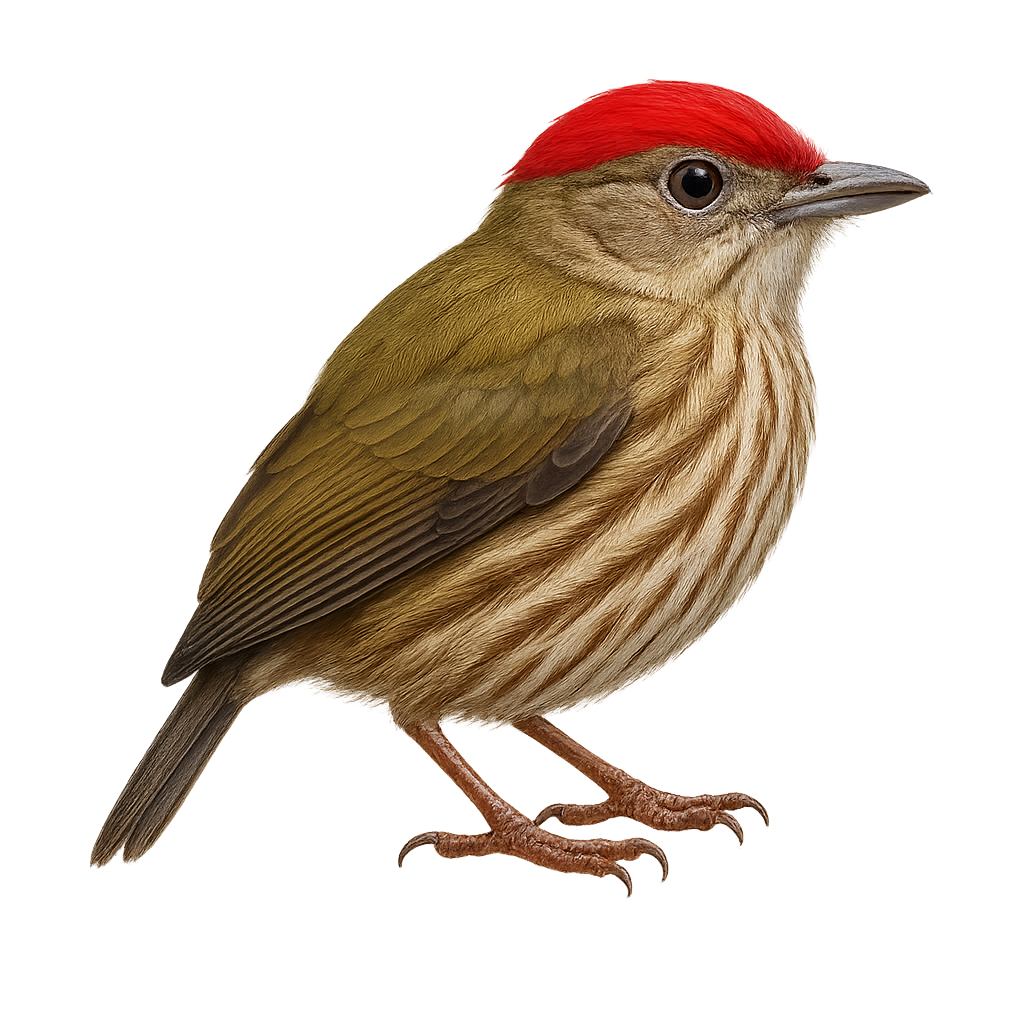Your wildlife photography guide.
Explore the striped manakin in detail, study its behavior, prepare your shots.
Where to observe and photograph the striped manakin in the wild
Learn where and when to spot the striped manakin in the wild, how to identify the species based on distinctive features, and what natural environments it inhabits. The WildlifePhotographer app offers tailored photography tips that reflect the striped manakin’s behavior, helping you capture better wildlife images. Explore the full species profile for key information including description, habitat, active periods, and approach techniques.
Striped Manakin
Scientific name: Machaeropterus striolatus

IUCN Status: Least Concern
Family: PIPRIDAE
Group: Birds
Sensitivity to human approach: Suspicious
Minimum approach distance: 5 m
Courtship display: February to March
Incubation: 18-20 jours
Hatchings: February to April
Habitat:
Tropical forests, dense undergrowth
Activity period :
Primarily active during the day, with peak activity in the morning and late afternoon.
Identification and description:
The Striped Manakin, Machaeropterus striolatus, is a small, colorful bird found in the tropical forests of South America. It is easily recognizable by its vibrant plumage, with distinct stripes on its back and wings. Males display brighter colors than females, with shades of red, green, and black. This manakin is often seen in dense undergrowth, where it primarily feeds on fruits and insects. It is known for its spectacular courtship displays, where males perform complex dances to attract females. Although its habitat is threatened by deforestation, it remains relatively common in some areas.
Recommended lens:
400mm – adjust based on distance, desired framing (portrait or habitat), and approach conditions.
Photography tips:
To photograph the Striped Manakin, it is advisable to use a 400mm lens or longer to capture the details of its colorful plumage without disturbing it. Look for dense undergrowth areas where it is likely to feed. Be patient and discreet, as this bird can be suspicious. Use a tripod to stabilize your camera and wait for it to perch on an open branch for the best shot possible.
The WildlifePhotographer App is coming soon!
Be the first to explore the best nature spots, track rutting seasons, log your observations, and observe more wildlife.
Already 1 432 wildlife lovers subscribed worldwide

